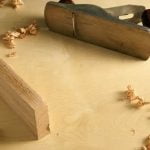Woodworking clamps are essential tools for any woodworking project, providing the necessary pressure to secure pieces of wood together during the gluing or assembly process. In this article, we will explore the topic of how to make wood woodworking clamps, offering a cost-effective alternative to purchasing them from stores. By crafting your own clamps, you can customize them to fit your specific project needs and save money in the process.
When it comes to woodworking clamps, there are various types available, each serving a different purpose in woodworking projects. From bar clamps to C-clamps and spring clamps, understanding their uses and advantages is crucial for successful woodworking endeavors. Knowing which type of clamp to use for specific tasks can make a significant difference in the quality and efficiency of your work.
In the following sections, we will delve into the materials needed to create wood woodworking clamps, provide a step-by-step guide on their construction, discuss design considerations, share expert tips and tricks for effective clamp-making, and explain how to maintain these tools for long-lasting use. Whether you are a seasoned woodworker or just starting out, learning how to make wood woodworking clamps can enhance your craft and elevate your projects to new heights.
Types of Woodworking Clamps
Woodworking clamps are essential tools in any woodworking project, as they help hold pieces of wood together securely while glue dries or during the assembly process. There are various types of woodworking clamps available, each serving a specific purpose. Understanding the different types of clamps and their uses can help woodworkers choose the right tool for their project.
Bar Clamps
Bar clamps are among the most common types of clamps used in woodworking. They consist of a long steel bar with movable jaws that can be adjusted to the desired length. Bar clamps are versatile and can be used for a wide range of projects, from small-scale to large-scale projects. They provide strong and even pressure across the workpiece, making them ideal for gluing up panels or laminating boards.
C-Clamps
C-clamps, also known as G-clamps, are another popular type of clamp in woodworking. They have a C-shaped frame with a screw mechanism that allows for easy adjustment of the opening width. C-clamps are commonly used for holding pieces together temporarily while other operations are being performed, such as drilling or sanding. They come in various sizes to accommodate different thicknesses of materials.
Parallel Clamps
Parallel clamps, also known as cabinet clamps, feature jaws that remain parallel to each other throughout their range of motion. This design ensures even pressure distribution along the entire length of the workpiece, making parallel clamps ideal for larger projects where consistent pressure is necessary. These clamps are often used in cabinet-making and furniture building due to their strength and stability.
By understanding the types of woodworking clamps available and their specific uses, woodworkers can select the right tool for each project’s requirements. Whether it’s bar clamps for panel glue-ups, C-clamps for temporary holds, or parallel clamps for heavy-duty applications, having a variety of clamps in your workshop arsenal can make woodworking tasks more efficient and effective.
Materials Needed
When it comes to woodworking projects, having the right tools and equipment is essential for achieving precise and professional results. Woodworking clamps are one of the basic tools that are indispensable for any woodworker. These clamps help hold pieces of wood together securely while glue dries or when working on intricate joinery.
While there are many types of woodworking clamps available in the market, making your own wood woodworking clamps can be a rewarding and cost-effective option. In this section, we will discuss the materials needed to make your own custom wood woodworking clamps.
To make wood woodworking clamps, you will need the following materials:
- Hardwood: Hardwood such as maple, oak, or walnut is ideal for making durable woodworking clamps.
- Steel Screws: High-quality steel screws with enough length to secure the clamp jaws in place.
- T-nuts: T-nuts will be used to create a threaded hole for adjusting and tightening the clamp jaws.
- Felt Pads (optional): Felt pads can be added to the clamp jaws to prevent marring or damaging delicate workpieces.
- Grip Tape (optional): Grip tape can provide additional friction between the clamp jaws and the workpiece for a more secure hold.
These materials are readily available at most hardware stores or online shops specializing in woodworking supplies. By using high-quality materials, you can ensure that your homemade wood woodworking clamps are sturdy, reliable, and suitable for a variety of woodworking applications. Next, we will delve into a step-by-step guide on how to assemble these materials into functional wood woodworking clamps.
Step-by-Step Guide
Woodworking clamps are essential tools in any woodworking project as they provide the necessary pressure to hold pieces of wood together securely while glue dries or when working on intricate details. Making your own wood woodworking clamps can be a rewarding and cost-effective alternative to purchasing them from stores. In this section, we will guide you through the process of making your very own wood woodworking clamps.
Materials Needed
Before getting started on making wood woodworking clamps, you will need to gather the necessary materials. The materials needed for this project include hardwood blocks (such as maple or oak), threaded rods, wing nuts, washers, and cork or rubber padding. It is important to choose high-quality materials that are durable and sturdy to ensure the longevity of your DIY woodworking clamps.
Step 1: Cutting the Hardwood Blocks
The first step in making wood woodworking clamps is cutting the hardwood blocks to the desired length. Depending on the size of clamps you want to make, you can adjust the dimensions accordingly. It is recommended to use a table saw or handsaw for cutting the hardwood blocks accurately and evenly.
Step 2: Drilling Holes
Next, drill holes into one end of each hardwood block where the threaded rods will be inserted. Make sure that the holes are straight and aligned properly to ensure that the woodworking clamps function smoothly. You can use a drill press for precision and accuracy when drilling the holes for better results in your DIY woodworking clamp project.
By following these detailed instructions on how to make wood woodworking clamps, you can customize your clamps according to your specific needs and preferences. With some patience and attention to detail, you can create high-quality woodworking clamps that will serve you well in various projects.
Design Considerations
When it comes to making your own wood woodworking clamps, there are several design considerations to keep in mind to ensure functionality and efficiency. Understanding these key aspects will help you create clamps that work effectively for your woodworking projects. Here are some design considerations to consider when making wood woodworking clamps:
- Clamp Size: Determine the size of the clamp based on the type of projects you typically work on. Larger clamps are ideal for bigger projects, while smaller clamps are suitable for more delicate or intricate pieces.
- Clamping Pressure: The amount of pressure a clamp can exert is crucial for holding pieces securely in place during woodworking. Make sure to design your clamps with enough strength to provide adequate pressure without damaging the wood.
- Handle Design: The handle of the clamp plays a significant role in how easy it is to use. Consider ergonomics and comfort when designing the handle to ensure a comfortable grip while tightening or releasing the clamp.
In addition to these design considerations, it’s also essential to pay attention to the materials used and construction techniques employed when making wood woodworking clamps. Quality materials and precise craftsmanship will contribute to the durability and effectiveness of your homemade clamps.
When creating your own wood woodworking clamps, take the time to plan out the design carefully and make adjustments as needed to meet your specific needs and preferences. By incorporating these design considerations into your DIY clamp project, you can enjoy a customized tool that enhances your woodworking experience.
Tips and Tricks
Woodworking clamps are essential tools in any woodworking project as they help hold pieces of wood together securely while glue dries or while performing other tasks. Making your own wood woodworking clamps can be a rewarding experience, allowing you to customize them to fit your specific needs and save money compared to buying them from a store. In this section, we will explore some expert tips and tricks for making woodworking clamps effectively.
When making wood woodworking clamps, it is important to pay attention to the materials you use. Opt for high-quality hardwoods like maple or oak that are strong and durable enough to withstand the pressure applied when clamping. Additionally, using metal components such as threaded rods or bolts can enhance the overall strength and longevity of your homemade clamps.
One tip for making effective woodworking clamps is to carefully consider the design and dimensions of the clamp. Ensure that the jaws of the clamp are wide enough to provide adequate surface area for gripping the workpiece securely.
The length of the clamp should also be sufficient to reach across the material being worked on, providing even pressure along its length. Taking these design considerations into account will result in a functional and reliable woodworking clamp that performs well in various projects.
Another trick for making woodworking clamps effectively is to pay special attention to the assembly process. Take your time ensuring all parts fit together snugly and securely, using clamps or vice grips to hold pieces in place while glue dries if necessary. Attention to detail during assembly will ensure that your homemade woodworking clamps are not only sturdy but also operate smoothly and effectively in holding your workpieces together during woodworking projects.
Maintenance of Woodworking Clamps
Woodworking clamps are essential tools in any woodworking project, as they help hold pieces of wood together firmly while the glue dries. It is important to properly maintain and care for wood woodworking clamps to ensure that they function effectively and have a longer lifespan. Here is a guide on how to maintain and care for your woodworking clamps:
Firstly, it is crucial to regularly clean your woodworking clamps to remove any sawdust, dirt, or debris that may have accumulated on them during use. This can be done by wiping them down with a clean, dry cloth after each use. For tougher stains or residues, a mild soap solution can be used, followed by thorough drying.
Additionally, it is recommended to periodically lubricate the moving parts of your wood woodworking clamps with a silicone-based lubricant. This will help prevent rusting and ensure smooth operation when tightening or releasing the clamps. Be sure to wipe off any excess lubricant to avoid staining the wood during use.
Moreover, storing your woodworking clamps properly is key to ensuring their longevity. It is advised to hang them on a rack or pegboard in a dry area to prevent any moisture buildup that could lead to rusting. Avoid leaving them in damp or humid conditions for an extended period of time. Regularly inspecting your woodworking clamps for any signs of damage or wear, such as bent screws or worn pads, will also help maintain their functionality and safety during use.
| Proper Maintenance | Benefits |
|---|---|
| Regular cleaning | Ensures smooth operation |
| Lubrication | Prevents rusting |
| Proper storage | Prevents moisture buildup |
Conclusion
Woodworking clamps are essential tools in any woodworking project, providing the necessary pressure and support to hold pieces of wood together securely. By making your own wood woodworking clamps, you not only save money but also have the opportunity to customize them to suit your specific needs and preferences. Learning how to make wood woodworking clamps can be a rewarding experience for any woodworking enthusiast.
In order to make your own wood woodworking clamps, you will need a few basic materials such as wooden dowels, screws, washers, and wing nuts. These items are readily available at hardware stores and can be easily sourced for your DIY project. With the step-by-step guide provided in this article, detailed instructions on constructing your own woodworking clamps will ensure that you create durable and functional tools for your projects.
When considering the design of your wood woodworking clamps, keep in mind factors such as size, shape, and pressure capacity. It is important to tailor the design to meet the specific requirements of your projects. Additionally, proper maintenance of these clamps is crucial for longevity and optimal performance.
By following the tips and tricks shared here on making, designing, and maintaining wood woodworking clamps effectively, you can enhance your woodworking skills and enjoy smoother project execution. So why not give it a try? Experiment with making your own wood woodworking clamps and see the difference they can make in your woodworking endeavors.
Frequently Asked Questions
What Can You Use as a Substitute for Wood Clamps?
When in a pinch and don’t have access to traditional wood clamps, there are several alternatives you can use. One popular substitute is using ratchet straps or rope to secure the wood pieces together. Another option is utilizing spring clamps or even hand screw clamps for lighter projects.
What Pipe Is Best for Woodworking Clamps?
The best pipe for woodworking clamps is usually black iron pipe due to its sturdy construction and ability to hold up under pressure. Black iron pipes come in various sizes and lengths, making them versatile for different woodworking projects. Additionally, they can be easily connected with fittings for added flexibility.
What Makes a Good Wood Clamp?
Several factors contribute to making a good wood clamp. Firstly, durability and strength are essential to ensure the clamp can handle the pressure exerted during woodworking tasks. A good clamp should also have a reliable locking mechanism that is easy to adjust and stays in place once set.
Comfortable handles make it easier to use the clamp effectively while working on projects, reducing hand fatigue in the process. Lastly, versatility in terms of size adjustment and grip capacity adds to the overall functionality of a quality wood clamp.

Hi everyone! I’m a woodworker and blogger, and this is my woodworking blog. In my blog, I share tips and tricks for woodworkers of all skill levels, as well as project ideas that you can try yourself.





